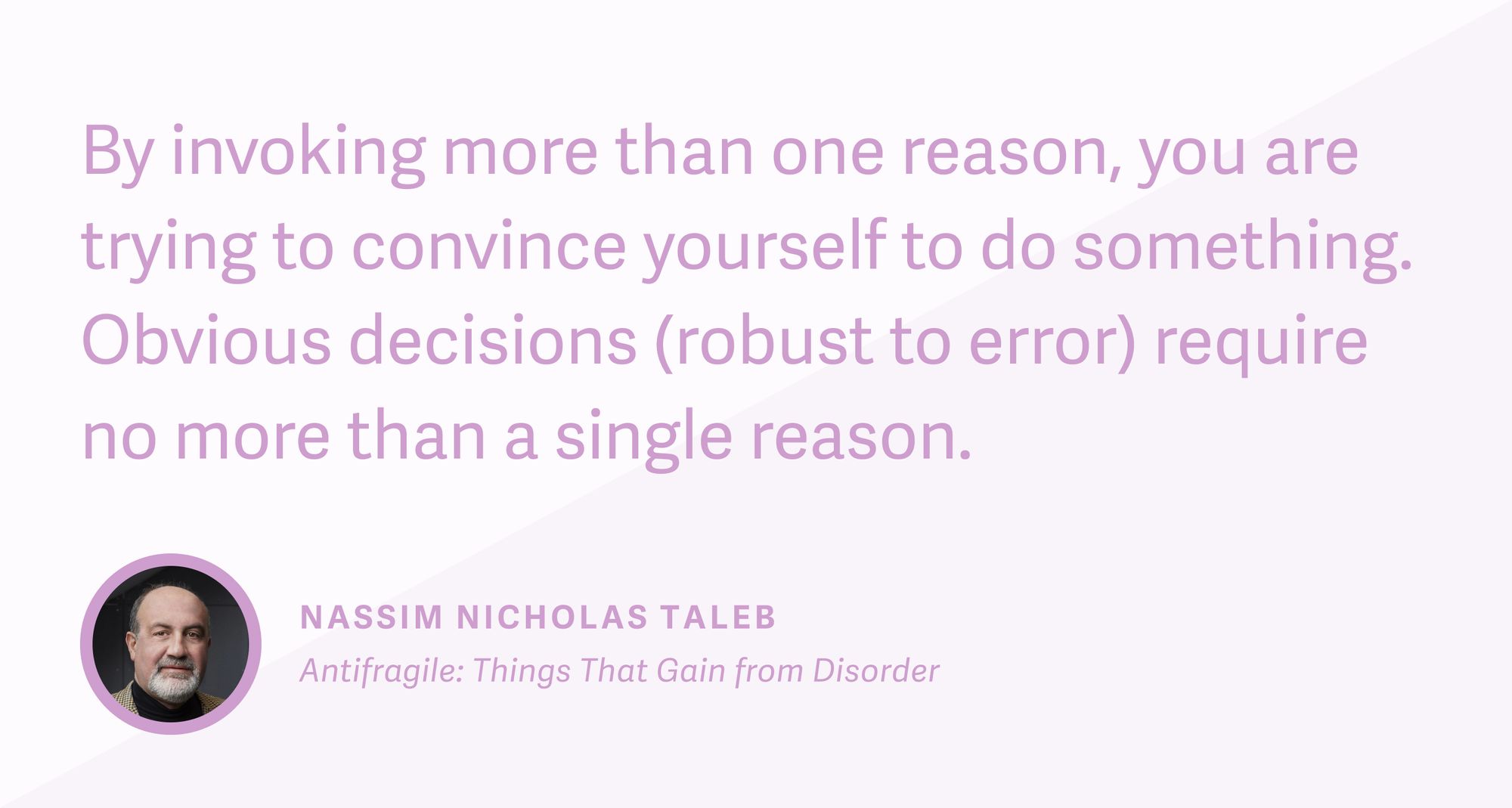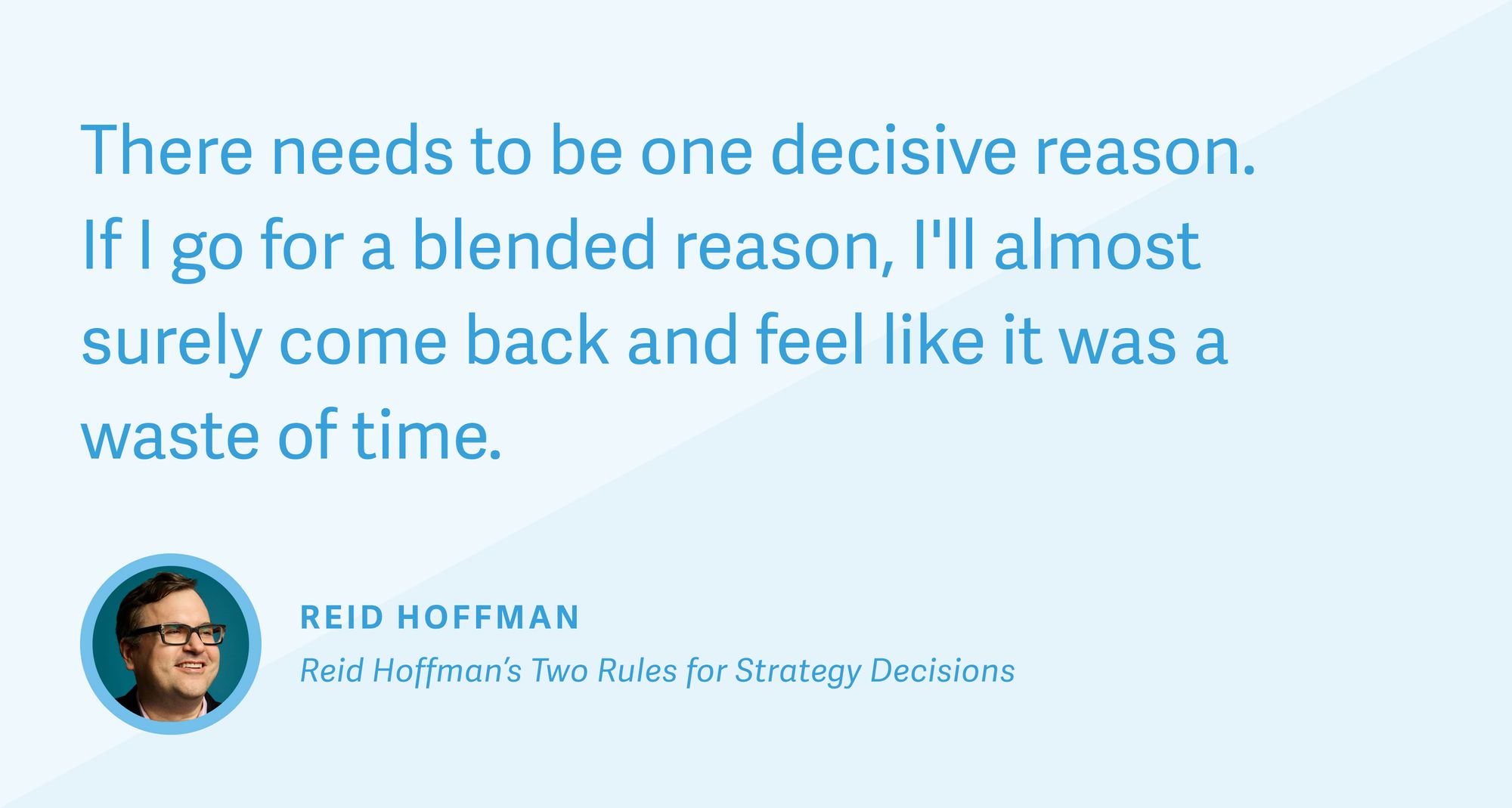
Leaders need to make high-quality decisions — fast.
At Superhuman, we use Reid Hoffman's "Single Decisive Reason" (SDR) principle. It's an incredibly powerful decision-making tool, especially for rapidly scaling startups.
Here's why you should use SDR — and how to apply it to your next big decision.
The perils of "blended reasoning"
When you have a dozen reasons to do something… don't.
As Nassim Nicholas Taleb explains in Antifragile, giving myriad justifications for an action exposes inner uncertainty.

Reid Hoffman agrees.
When Reid was considering a trip to China, he could think of a few good reasons to go. But he couldn't think of 1 single great reason.
Reid sensed the risk of blended reasoning — making his decision with multiple justifications. He decided against the trip to China.

Why are blended reasons so dangerous? Because weak reasons rarely build on each other — but when they're numerous, they appear compelling.
To put it another way: fuzzy inputs generate fuzzy outputs.
How to uncover your SDR
Finding your SDR requires more work than following cloudy blended reasoning! But think of it as up-front investment to sharpen your thinking and prevent misalignment.
Here's an example from Superhuman...
We onboard Superhuman customers 1:1 in 30-minute sessions — tailoring their inbox to their individual workflow. Should we continue this strategy as our customer base grows?
- There are many good reasons to scale personalized onboardings.
- There are also many good reasons not to scale personalized onboardings.
- So should we — or should we not — scale personalized onboardings?
1. Brainstorm reasons for and against
Start by listing all the reasons for and against the decision. Here's a list of pros and cons for scaling Superhuman's personalized onboardings:
Pros
- Customers will understand the product deeply.
- Customers will experience white-glove service.
- We can observe users in action and identify product improvements.
- We hear customer feedback, which informs product decisions.
Cons
- Onboarding individual customers is expensive.
- We would need to 10x our customer teams.
- We would need to expand our customer teams across time zones.
Further Reading: The most productive way to brainstorming.
2. Categorize your reasons
Ignore the final tally of pros and cons — that steers you toward blended reasoning.
Instead, group reasons by category:

3. Prioritize your categories
Now ask: which category is most important? This reveals your SDR.
At Superhuman, customer experience is the most important category.
We wouldn't prioritize other categories at the expense of customer experience. Therefore, we should scale personalized onboardings — and push ourselves to make it work!
This approach is deceptively simple, but surprisingly powerful. Sharing your SDR will communicate intent, ensure alignment, and keep everyone focused on what matters!




